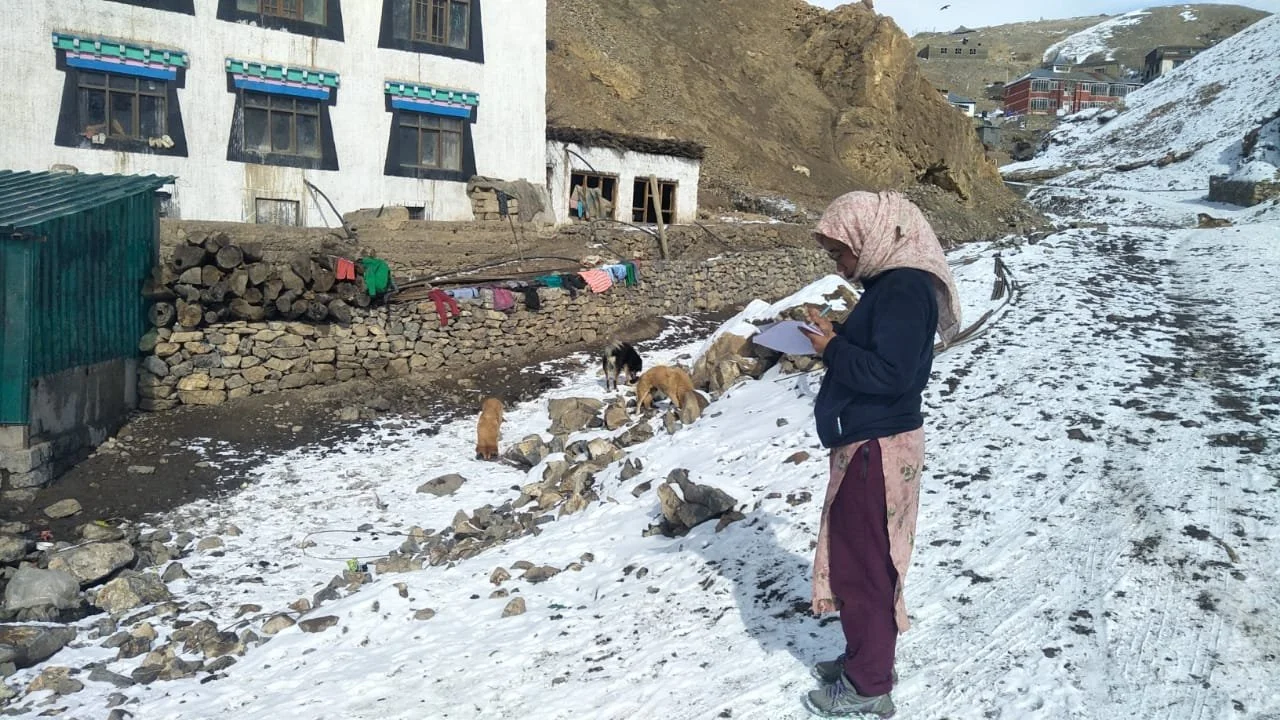
Image (left) shows the direct conflict dogs have with wildlife in these regions, many of them chasing away wild ungulates.
· Image (right) shows women carrying out dog monitoring/surveys in Kibber
Dog Population Monitoring
In human-dominated landscapes around the world, dogs are the most abundant terrestrial carnivores. While many are beloved companions, free‑ranging dogs can threaten livestock, disturb native wildlife, and create new challenges for local livelihoods. In the last few years, the free-ranging dog population in the Spiti Valley has been rising—an increase closely tied to the region’s booming tourism industry. Understanding these dynamics is essential for protecting both people and the fragile ecosystem.
In Spiti Valley, dog populations are monitored by community members. The village of Kibber and Chicham are unique as here the women carry out annual dog‑population surveys, tracking trends and evaluating the impact of community‑run sterilisation camps coordinated with local authorities.


